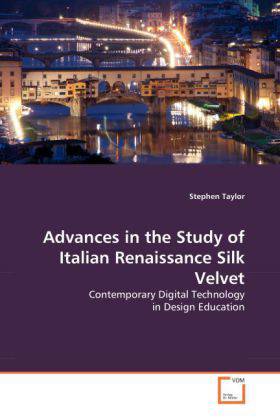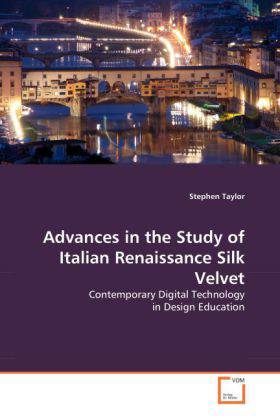
- Afhalen na 1 uur in een winkel met voorraad
- Gratis thuislevering in België vanaf € 30
- Ruim aanbod met 7 miljoen producten
- Afhalen na 1 uur in een winkel met voorraad
- Gratis thuislevering in België vanaf € 30
- Ruim aanbod met 7 miljoen producten
Zoeken
Advances in the Study of Italian Renaissance Silk Velvet
Contemporary Digital Technology in Design Education
Stephen Taylor
Paperback | Engels
€ 58,45
+ 116 punten
Omschrijving
A group of Italian Renaissance velvet textiles, created over three cen-turies as part of the mercantile system, were traded over time in Europe until 1927, when they were shipped to the U.S. as educational objects. Traded again, they eventually came to rest as the Cranbrook Collection, laying undisturbed for over fifty years in the archives of the New Brunswick Museum in Saint John, New Brunswick, Canada. These fragments form the basis for this thesis, which outlines a process of digitally recording textile fragments, illustrating a procedure for crea-ting a virtual silk mill for museum display and Internet use, showing how a digital collection of textile images can be used in a virtual museum setting. The importance of digital technology in the learning environment, as a tool for classroom and online course delivery in crafts, textile design and museum study is also discussed, including a sample lesson plan using digitised textile designs.
Specificaties
Betrokkenen
- Auteur(s):
- Uitgeverij:
Inhoud
- Aantal bladzijden:
- 124
- Taal:
- Engels
Eigenschappen
- Productcode (EAN):
- 9783639042573
- Verschijningsdatum:
- 3/07/2008
- Uitvoering:
- Paperback
- Formaat:
- Trade paperback (VS)
- Afmetingen:
- 152 mm x 229 mm
- Gewicht:
- 176 g

Alleen bij Standaard Boekhandel
+ 116 punten op je klantenkaart van Standaard Boekhandel
Beoordelingen
We publiceren alleen reviews die voldoen aan de voorwaarden voor reviews. Bekijk onze voorwaarden voor reviews.











